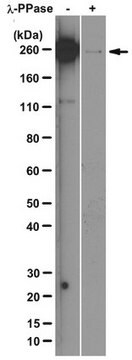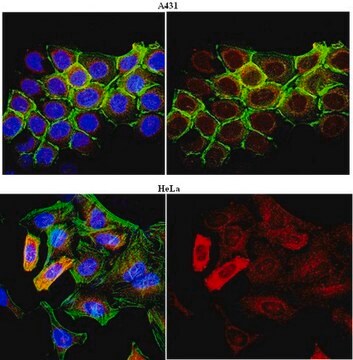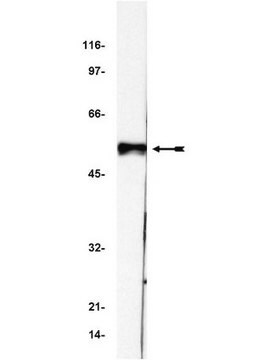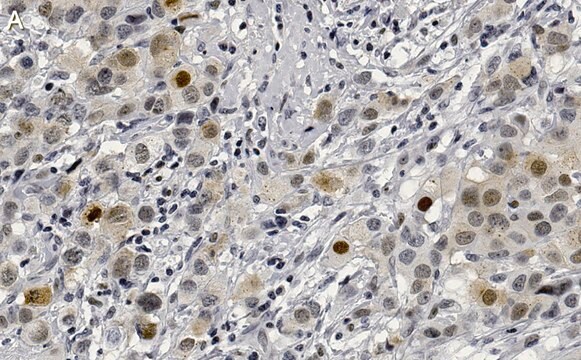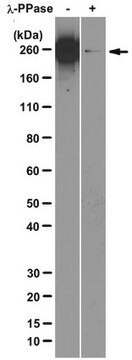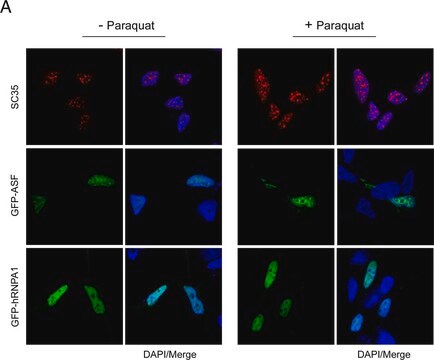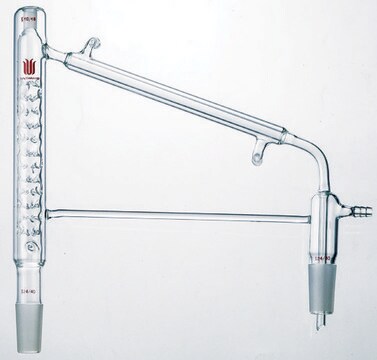04-1572-I
Przeciwciało przeciwko podjednostce B1 polimerazy II RNA (fosfo-CTD Ser-5), klon 3E8
culture supernatant, clone 3E8, from rat
Synonim(y):
Ukierunkowana przez DNA podjednostka RPB1 polimerazy RNA II, podjednostka B1 polimerazy RNA II, podjednostka A polimerazy RNA II ukierunkowana przez DNA, największa podjednostka polimerazy RNA III, podjednostka RPB1 polimerazy RNA II ukierunkowana przez RNA
About This Item
Polecane produkty
pochodzenie biologiczne
rat
Poziom jakości
forma przeciwciała
culture supernatant
rodzaj przeciwciała
primary antibodies
klon
3E8, monoclonal
reaktywność gatunkowa
mouse
reaktywność gatunkowa (przewidywana na podstawie homologii)
human (immunogen homology)
metody
ChIP: suitable
ELISA: suitable
western blot: suitable
izotyp
IgG2aκ
numer dostępu NCBI
numer dostępu UniProt
Warunki transportu
dry ice
docelowa modyfikacja potranslacyjna
phosphorylation (pSer5)
informacje o genach
human ... POLR2B(5431)
Opis ogólny
Specyficzność
Immunogen
Zastosowanie
Analiza ELISA: Reprezentatywna partia została użyta przez niezależne laboratorium do wykrycia podjednostki B1 polimerazy RNA II (fosfo-CTD Ser-5) w ChIP (Chapman, R., et al. (2007). Science. 318(5857):1780 -1782.).
Epigenetyka i funkcje jądrowe
Czynniki transkrypcyjne
Jakość
Western Blot Analysis: A 1:2,000 dilution from a representative lot detected RNA polymerase II subunit B1 (phospho-CTD Ser-5) in 10 µg of untreated and lambda phosphotase treated NIH/3T3 cell lysates.
Opis wartości docelowych
Powiązanie
Postać fizyczna
Przechowywanie i stabilność
Zalecenia dotyczące postępowania: Po otrzymaniu i przed zdjęciem nasadki odwirować fiolkę i delikatnie wymieszać roztwór. Rozdzielić do probówek do mikrowirówki i przechowywać w temperaturze -20°C. Unikać powtarzających się cykli zamrażania/rozmrażania, które mogą uszkodzić IgG i wpłynąć na działanie produktu.
Komentarz do analizy
Lizaty komórek NIH/3T3 nietraktowane i traktowane fosfotazą lambda
Oświadczenie o zrzeczeniu się odpowiedzialności
Nie możesz znaleźć właściwego produktu?
Wypróbuj nasz Narzędzie selektora produktów.
Kod klasy składowania
10 - Combustible liquids
Klasa zagrożenia wodnego (WGK)
WGK 1
Certyfikaty analizy (CoA)
Poszukaj Certyfikaty analizy (CoA), wpisując numer partii/serii produktów. Numery serii i partii można znaleźć na etykiecie produktu po słowach „seria” lub „partia”.
Masz już ten produkt?
Dokumenty związane z niedawno zakupionymi produktami zostały zamieszczone w Bibliotece dokumentów.
Nasz zespół naukowców ma doświadczenie we wszystkich obszarach badań, w tym w naukach przyrodniczych, materiałoznawstwie, syntezie chemicznej, chromatografii, analityce i wielu innych dziedzinach.
Skontaktuj się z zespołem ds. pomocy technicznej